#tamisiocaris
Text
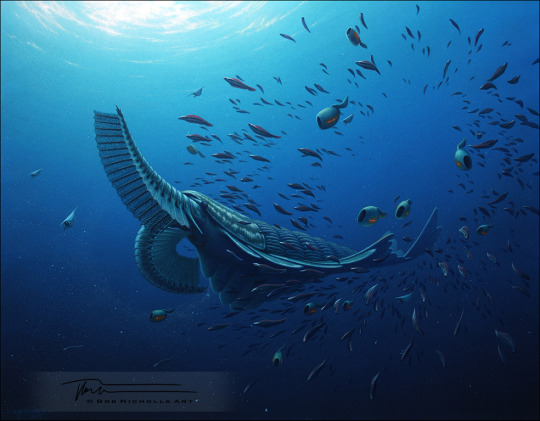

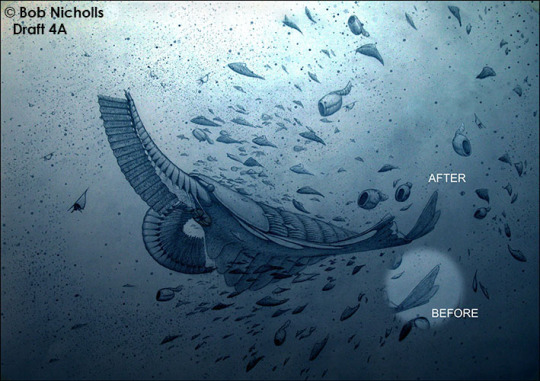
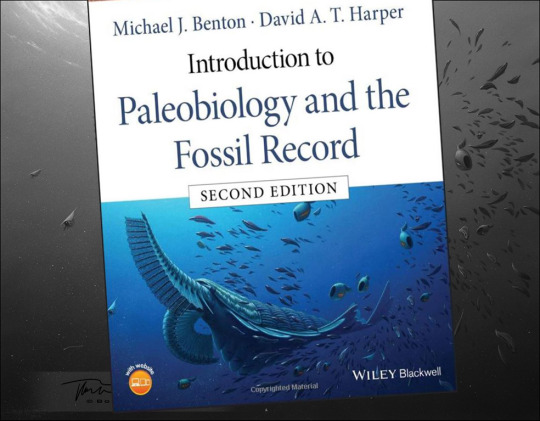
Today's random portfolio artwork is an acrylic painting of Tamisiocaris, a radiodont from the Cambrian Sirus Passet lagerstatte, Greenland. This was one of the very last traditional paintings I ever created (I paint digitally now).
#Art#Painting#PaleoArt#PalaeoArt#SciArt#SciComm#DigitalArt#Illustration#Dinosaurs#Birds#Reptiles#Palaeontology#Paleontology#Cambrian#Tamisiocaris
113 notes
·
View notes
Text
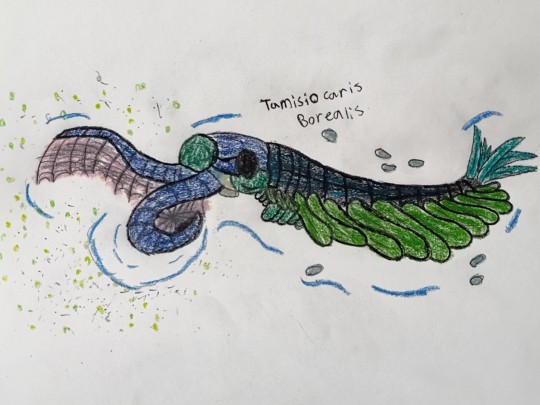
Tamisiocaris was another radiodont that lived sometime around 521 to 514 million years ago. Instead of hunting for larger prey like the previous radiodonts we covered, Tamisiocaris had adapted for filter feeding, much like modern baleen whales. On its front appendages it had long bristles which it would use like a net to catch plankton. This arthropod has been measured at about 34cm or 1.12ft in length.
#tamisiocaris#journey through time#paleoart#paleontology#evolution#cambrian#paleozoic#radiodont#arthropods
14 notes
·
View notes
Text
My 2023 Art Highlights
2023 was a pretty rough year for me, but one of the highlights was really finding my style, i feel more confident in my abilities as an artist than ever before
i properly drew 165 animals last year, aiming for a higher number and more diversity this year

#art summary#2023 art summary#art summary 2023#2023 summary of art#paleoart#paleontology#digital art#artists on tumblr#digital artwork#palaeoart#digital illustration#sciart#dinosaur#Balaenognathus#Tselfatia#Seriocrinus#Cymbospondylus#Tamisiocaris#Protoceratops#Xiphactinus#“Styginetta”#Magnapaulia#Coelurus#Irritator#Dinochelys#Stelladens#Tylosaurus#Velociraptor#Prognathodon#Alcmonavis
16 notes
·
View notes
Text

My favorite guys!! the radiodonts :)
Alt versions under read more 👁
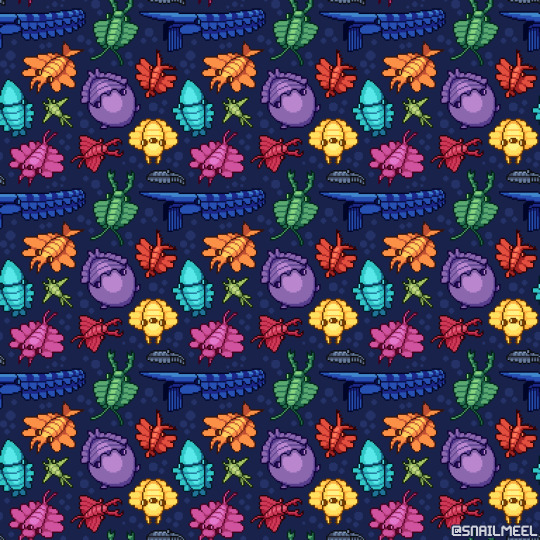

3-eyed Peytoia version and also a transparent one!
#radiodont#anomalocaris#aegirocassis#hurdia#peytoia#cambroraster#stanleycaris#amplectobelua#lyrarapax#caryosyntrips#tamisiocaris#cambrian#ordovician#devonian#paleo art#paleoart#paleoblr#pixel art#pattern#schinderhannes#radiodonta#paleozoic
212 notes
·
View notes
Photo


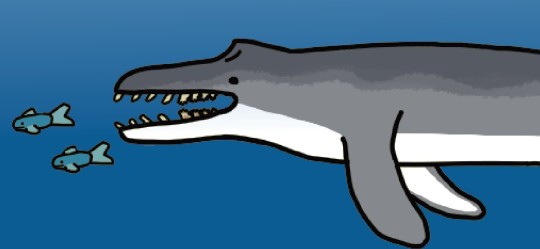

Flocking Together
Tamisiocaris
Borhyaena
Coronodon
Turnersuchus
1 note
·
View note
Text
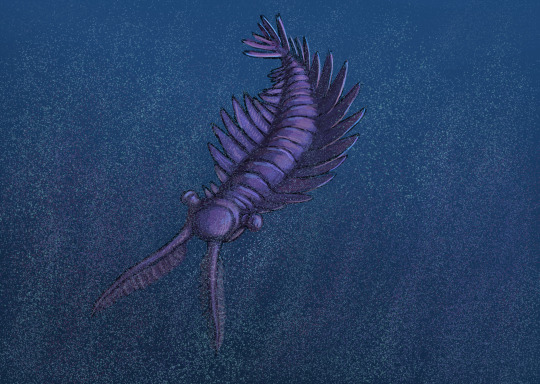

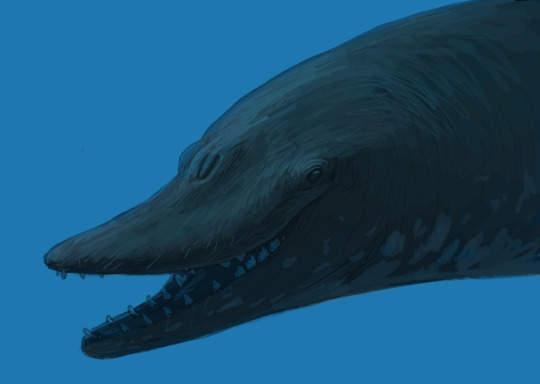

Results from the Flocking #paleostream Tamisiocaris, Borhyaena, Coronodon and Turnersuchus.
247 notes
·
View notes
Text
Mermay Prompts (Unofficial)- Prehistoric Edition
Anomalocaris
Trilobite
Megalodon
Essexella
Dunkleosteus
Ammonite
Icthyosaur
Plesiosaur
Cameroceras
Opabinia
Tamisiocaris borealis
Hurdia victoria
Hallucigenia
Wiwaxia
Ottoia prolifica
Haplophrentis carinatus
Isoxys
Marrella
Leanchoilia
Dickinsonia
Syllipsimopodi bideni
Styletoctopus
Tusoteuthis
Priscomyzon riniensis
Asterotrygon maloneyi
Glyphithyreus
Leedsichthys
Tylosaurus
Metriorhynchus
Kronosaurus
Prehistoric hominid (Reverse Mermaid!)
The last prompt is a bit of a wild card, with the human side being prehistoric as well as the fish.
(I personally will not be able to post every day, but I intend to fill all 31 prompts).
This is not intended to be scientific, more of an exploration of sea creature art, and the extinct sealife I see getting passed over in most MerMays. I'll still be making traditional mermaid art for most of these (with a twist). I hope you enjoy.
8 notes
·
View notes
Text
when you have awesome creature URLs but most ppl don’t know what they are…. tamisiocaris(my science sideblog) is a cool cambrian beast and i just got tullymonstrum, AKA tully monster which is also a cool cambrian beast . i think the world is so awesome it’s genuinely so fucking cool that we can still recover fossils from literally millions of years ago… like those things LIVED HERE they literally EXISTED!!!!!
3 notes
·
View notes
Photo

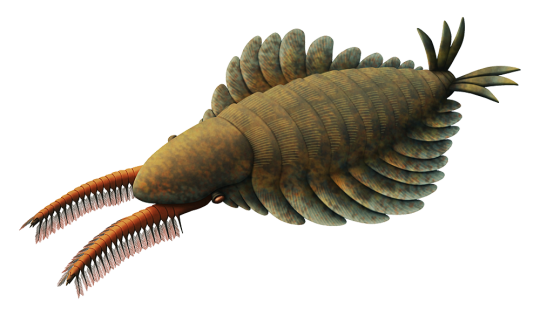



Time for some more PBS Eons commission work!
The radiodonts Lyrarapax and Tamisiocaris, from "How Plankton Created A Bizarre Giant of the Seas"
https://www.youtube.com/watch?v=G0oKBPZODhM
The rhynchocephalians Sphenotitan, Clevosaurus, and Kawasphenodon, from "When Lizards Took Over the World"
https://www.youtube.com/watch?v=peeX3PKOE_w
———
Nix Illustration | Tumblr | Pillowfort | Twitter | Patreon
#science illustration#paleontology#paleoart#palaeoblr#pbs eons#lyrarapax#tamisiocaris#radiodonta#dinocaridida#arthropod#invertebrate#spenotitan#clevosaurus#kawasphenodon#sphenodontia#rhynchocephalia#lepidosauria#reptile#art
1K notes
·
View notes
Text
# 161
Tamisio
Water
Long-range
Small
Hp: Below Average
Atk: Below Average
Def: Average
Acc: Above Average
Spd: Average
Support: Ally +Def 40%, +Acc 30%
Tamisio's stats may seem underwhelming, but between its support effects, the ability to simultaneously heal and remove status effects from the entire team, and its fp-stealing capabilities, it's a valuable support member. Quicken Plus is a cherry on top!
-
Tamisiocaris
Size: 2 feet
Paleozoic Cambrian
Diet: Plankton
Location: Greenland
This relative of Anomalocaris filtered plankton through its appendages like baleen whales.
-
Being related to Anomalo, it shouldn't be surprising that the two share many animations. Tamisio is patterned based on the Humpback Whale, with navy blue on top and white on the bottom with faint lines running lengthwise. Its tail resembles a whale's tail, unlike it's real life counterpart, and it has either a stylized blue or more realistic white (I haven't decided) waterspout design on the top, to mimic a whale's blowhole. Its eyes are cyan, and the sievelike structures on its appendages are tinted slightly yellow.
Tamisio is found in Curious Fossil Rocks. It might have a super evolver, I am still debating that.
#fossil fighters#vivosaurs#original vivosaurs#fanmade vivosaurs#tamisiocaris#fossil fighters revival#water vivosaurs#curious fossil rocks
2 notes
·
View notes
Photo
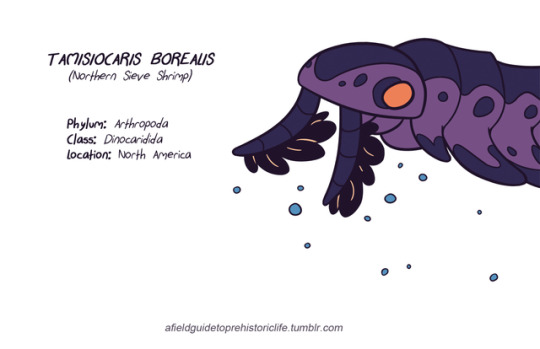
A FIELD GUIDE TO CAMBRIAN FAUNA is part of a series of zines about prehistoric life. A mix of illustration, speculation and science, this second volume contains 50+ pages as well as 20 full-color illustrations.
How you can support the project:
Purchase the 1st volume here! (limited supply)
Reblog/like/spread the word!
28 notes
·
View notes
Note
What is your favourite creature from the Cambrian?
Tamisiocaris Borealis, the first-known filter feeder and close cousin to Anomolocaris!

WHALE SHRIMP.
(art src: Bob Nichols/University of Bristol)
686 notes
·
View notes
Text
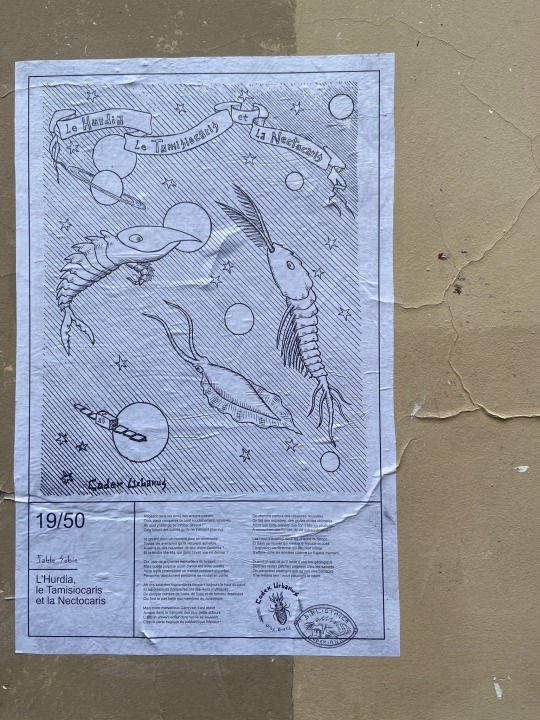
Codex Urbanus, Fable Subie 19/50, en l’honneur des 400 ans de Jean de la Fontaine (1621-1695) et de ses Fables Choisies; à voir rue Marcadet à Montmartre (Paris 18)
Le HURDIA, le TAMISIOCARIS et le NECTOCARIS
Nageant dans les éons des océans passés,
Trois vieux compères se sont soudainement retrouvés
Ah quel plaisir de se tomber dessus !
Cela faisait des lustres qu’ils ne s’étaient plus vus
Ils prirent donc un moment pour se remémorer
Toutes les aventures qu’ils vécurent autrefois.
Avaient-ils des nouvelles de leur chère Opabinia ?
Et la tendre Marella, qui donc l’avait vue en dernier ?
Oui, que de souvenirs merveilleux ils avaient,
Mais quelle surprise aussi d’avoir été ainsi oubliés.
Alors qu’ils proposaient un monde cohérent et parfait,
Personne, absolument personne ne voulait en parler.
Ah ces satanées mammifères tiennent toujours le haut du pavé,
Et les puissants dinosaures ont des récits mythiques
On compte nombre de livres, de films et de bandes dessinées
Qui font la part belle aux membres du Jurassique
Mais notre merveilleux Cambrien s’est éteint
Jusque dans la mémoire des plus petits auteurs
C’est un univers entier dont nul ne se souvient
C’est la perte tragique du paléozoïque inférieur !
On cherche partout des créatures nouvelles
On fait des monstres, des grylles et des chimères
Alors que cette planète que l’on traite en poubelle
A connu bien des formes de vie extraordinaires !
Las ! tout s’évanoui dans les prisons du temps ;
Et dans ce monde qui n’est que finitude et oubli
L’explosion cambrienne qui semblait infinie
S’efface dans les annales comme un fugace moment
Quand on sait ce qu’il reste d’une ère géologique
Dont les restes pétrifiés palpitent chez les savants
On comprend aisément que de nos vies basiques
Il ne restera rien : nous peuplons le néant …
#streetart#codex#street art#arturbain#picoftheday#paris graffiti#streetartparis#montmartre#fablesdelafontaine#fablesvandales#fablesubie#fablessubies#codexurbanus
1 note
·
View note
Text
Random Fact #3,369
The first known filter feeder was a large shrimp-like creature called Tamisiocaris borealis.
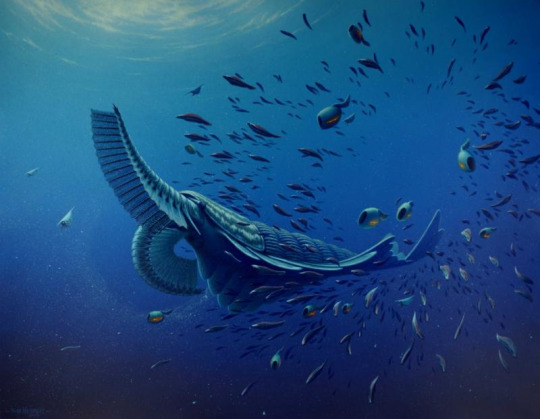
3 notes
·
View notes
Photo
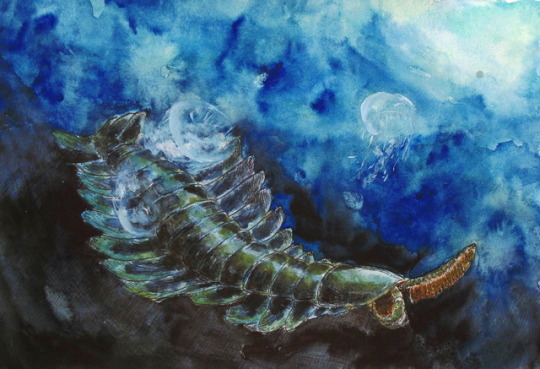
“Tamisiocaris borealis”
Here’s an illustration I’ve made of Tamisiocaris borealis, an anomalocarid discovered from an appendage in Cambrian stage 3 strata (521 mya-514 mya). It predates the Burgess Shale (508 mya), which is where the first Anomalocarid was discovered. When an appendage of Tamisiocaris borealis was found with little filaments attached, it was concluded that it was a filter feeding animal, much like modern whales. This is different from most Anomalocarids, which were active predators, except for one other known Anomalocarid, Aegriocassis. The discovery of this filter feeder has helped scientists make better assumptions about the early Paleozoic oceans.
How to paint underwater scenes in watercolor?? Even though water is in the name of watercolor, it seems especially difficult for me to produce a satisfying result.
It’s watercolor and pen on B4 watercolor paper.
#art#Illustration#scientific illustration#science#paleontology#cambrian#watercolor#pen#ink#anomalocarid#anomalocaris#jellyfish#ocean#water
3 notes
·
View notes